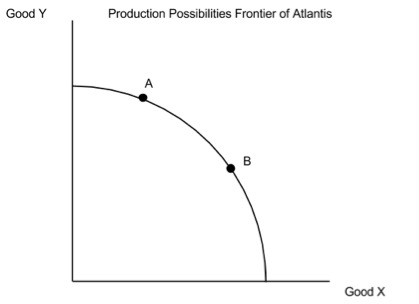
Grades K-2, 3-5
Happy EconEdMonth! Celebrate economics all month long by visiting EconEdMonth.org

Don't have an account yet? Sign up for free
Don't have an account yet? Sign up for free
Nearpod version available
Students will be able to:

In this personal finance lesson, students will investigate opportunity cost by using slope.
The concept of opportunity cost is a foundation of economic study, and while advanced mathematics is generally used to compute it from a production possibilities frontier, the computation of slope (“rise over run”) can be used to approximate the opportunity cost by using production possibilities curves. Students will be using their math skills to compute the slopes of various production possibilities frontiers in order to determine the opportunity cost of producing different combinations of two goods. Ultimately, students will move from computing slope on a linear production possibilities frontier to one that is concave to the origin where the slope changes. This lesson is best taught in a high school Introductory Algebra course. The teacher should note that this lesson does not cover all aspects of slope. For example, all of the slopes examined in this lesson, due to the nature of the production possibilities frontier, are negative. Further, the slopes are located exclusively in the first quadrant of the coordinate plane. However, the lesson is designed to teach students a practical application of slope.
a, Ask students to define slope and opportunity cost.
[Slope is the rate of change or steepness of the line; opportunity cost is the highest valued alternative that must be given up to gain something else.]
b. Refer students to Slide 1 and review the computation of slope, specifying the “rise over run” calculation.
c. Ask students to state the relationship between slope and opportunity cost.
[Students should state that slope is a mathematical expression of opportunity cost and shows the quantity of goods which must be given up to gain more of the other good.]
Multiple Choice

Constructed Response

Grades K-2, 3-5

Grades 9-12


Grades 9-12
